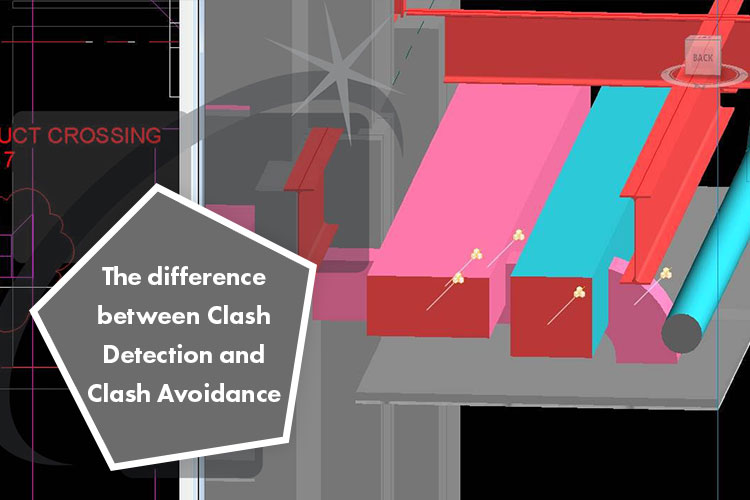The difference between Clash Detection and Clash Avoidance

Early collaboration is crucial if the final BIM model is to be clash free. Building Information Model has the capacity to detect and resolve clash right in the pre-planning stage due to BIM Coordination Services. However, as the design and the number of disciplines involved in the design increase the chances of soft, hard and workflow clashes also increase.
Clash detection is the very backbone of BIM’s widespread integration. However, a step before clash detection comes clash avoidance. It is an attempt to prevent spatial overlaps to ensure coordination. Higher the level of coordination between different components that make an asset or a design, higher are the chances of clash avoidance. To put it simply clash avoidance is the prevention while clash detection is cure.
Clash detection is a reactive process wherein software like Navisworks, Revit etc. identifies any clash in the 3D model. When two objects occupy the same space and as a result are overlapping then it is known as a hard clash. Soft clash occurs due to any object not being given a correct structural or spatial tolerance. Software like Navisworks also allows to set a tolerance level due to which any clash below that value will be assumed negligible or one which can be resolved on site. The main purpose of clash detection is to identify any design flaws during the virtual pre-construction phase in order to save time, money and resources during the actual on-site construction.
What is Clash Avoidance?
Clash avoidance on the other hand is a proactive process. The aim is to take proper steps so that spatial overlaps and semantic conflicts can be avoided altogether. Clashes are more difficult to avoid when multiple disciplines are working on different aspects of the same project. It is here that BIM becomes extremely essential as it facilitates interdisciplinary coordination and thus reduces those clashes which may arise as a lack of effective communication. Clash avoidance unlike clash detection is also not a one-time process that can be run through a software. It is a process that needs to be maintained throughout the construction lifecycle, right from step one the techniques and strategies for clash avoidance must be implemented.
What happens after Clash Detection?
To detect a clash is not the end goal, it is in fact to resolve them and create accurate BIM models that are ready for construction phase. Clash resolution is thus very imperative. For each clash that has been detected there needs to be a contingency plan which helps plan how the clashes will be eradicated. A clash report is taken out and sent to the concerned discipline following which changes in the BIM model are made. Another clash detection process is run to ensure that the new design also doesn’t have any new clashes or to check if the previous clash has been sufficiently resolved. Finally, a “sanity check” is run to ensure that the model is completely error free and accurate.
How can we promote Clash Avoidance?
The main method for avoiding clash is by effective collaboration of all the stakeholders involved in the process. BIM allows for effective collaboration and streamlines communication which in theory should avoid clashes that would arise with more traditional methods of construction. It also provides a common data environment so that everyone can properly visualize the 3D model and make any changes in design which would have led to a clash. The BIM models are also data centric providing all the information regarding schedule, cost, as well quality, asset codes, dimensions, lifecycle of the component etc. A skilled BIM modeler can utilize this information to produce models that would have less number of clash. Moreover, by proper investigation of clashes it is possible to gain information about the root cause of the clash and what can be done to avoid it.
Conclusion:
Building Information Modelling facilitates both clash avoidance and clash detection. By promoting transparent communication, it takes collaboration to a higher level and increases the chances of clashes. However, if there are any clashes then they can be resolved by utilizing Clash Detection Services. The end result with an accurate BIM model remains the same: an error-free BIM model.